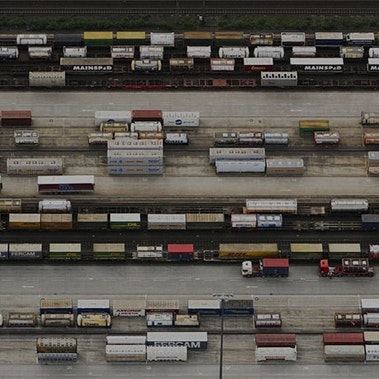By Adriene Bailey and Tanya Mahbubani
This article first appeared in IANA in 2020.
If you missed the recent announcement of Kathryn Farmer’s appointment as the next CEO of BNSF Railway – well, you must have been on vacation or asleep. It’s a glass-ceiling-busting moment for the rail industry. But dig a little deeper and you’ll find that it’s part of a quietly developing yet critical trend.
As a point of reference, Christine Gonzalez Aldeis became the first female railroad engineer in the United States in the 1970s. Now, nearly 50 years later, we are seeing unprecedented numbers of women taking on leadership roles within the Class I railroads.
Many of these women rose through the ranks at railroads, some staying at the same company for their career and others successfully making the transition across departments and organizations. There are a growing number of women in executive positions just below the C-suite as well.
So what has changed so that we are now seeing more women in rail leadership? The choice of who gets offered C-suite roles is typically made by just a few senior executives, who must weigh a range of factors – both objective, quantitative elements, and intangibles. The intangibles are where things can get tricky but increasing numbers of women in C-suite and executive roles attest that consideration of intangibles is breaking free from being hindered by affinity bias (i.e., like promoting like) and old assumptions about who can do these jobs.
Sponsorship – advocacy and support from leaders in power – is an essential factor in the selection of any senior executive. We build trust and confidence in each other over time and that allows us to advocate for specific individuals when jobs are in play. Railroad boards and C-Suite executives have pushed boundaries, looked more broadly for talent, and been intentional in finding and developing diverse candidates who clearly have the skill, the talent, and the inclination to be the future leaders in our industry. Most importantly they are supporting, advocating for, and sponsoring them on their leadership journey. Intentional and inclusive sponsorship of women – and diverse talent overall – is key to providing the opportunity to build the skills and gain the experience required to serve in top positions.
Research by Oliver Wyman and others has found that women tend to operate from more collaborative, inclusive, and integrative leadership styles. This is the exact style organizations are looking to cultivate today to balance/move away from top down, autocratic "do as I say" styles that stifle innovation, curtail engagement, and limit the value creation in a firm. At Oliver Wyman, we see the importance of more women becoming a growing and vital component of senior management teams across industries, reflecting the need to face a new era, where a wider range of competencies and leadership styles are not only acceptable but necessary.
The rail industry is at an inflection point. Most industry experts would agree, despite the significant progress made through precision scheduled railroading (PSR) and other recent operating improvement strategies, that rail has even more difficult and transformative challenges ahead. The next decade will require unprecedented innovation, determination, and vision from the C-suites of the Class I railroads. More diverse perspectives, the motivation to tap into the engagement of the full organization and to bring outside-the-box solutions to the challenges the industry faces – all of these are enhanced by broadening the diversity of the talent sitting at the table, something we need now more than ever.
Women in C-Suite Roles at Class I Railroads
- Kathryn Farmer, BNSF (announced)
- Ann Adams, Chief Transformation Officer, NS
- Suzanne Grafton, Chief Accounting Officer, KCS
- Jennifer Hamann, CFO, UP
- Julie Piggott, CFO, BNSF
- Marlene Puffer, President and CEO, Investment Division, CN
- Kathleen Brandt, Chief Information Officer, CSX
- Kathryn Famer, EVP-Operations, BNSF (current)
- Cynthia Sanborn, COO, NS
- Beth Whited, EVP & CMO, UPRR (previous)
- Diana Sorfleet, Chief Administrative Officer, CSX
- Vanessa Sutherland, Chief Legal Officer, NS
- Judy Carter, Chief Human Resources Officer, BNSF
- Lora Cheatum, SVP, Human Resources, KCS
- Dorothea Klein, Chief Human Resources Officer, CN
- Beth Whited, EVP & Chief Human Resources Officer, UP
Congratulations and admiration go out to all of the women who have chosen to make rail a career, and especially to the growing number of women leaders making a difference in railroad C-Suites. Thanks as well to the sponsors who advocate for them, highlight their achievements and help them navigate their journey to leadership. Going forward, it will be of continued importance for rail leaders at every level to be intentional in cultivating, getting to know, and promoting diverse talent. The future of the rail industry depends on it.


